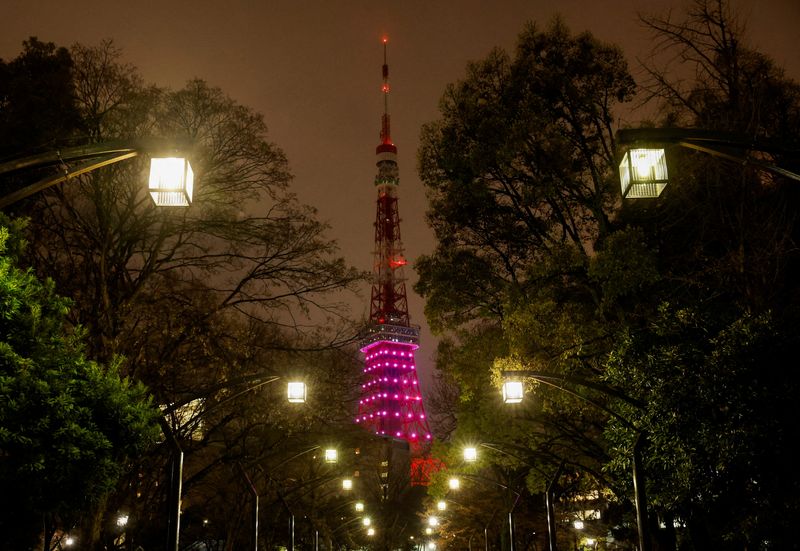By Emily Chow and Yuka Obayashi
SINGAPORE (Reuters) – Key North Asian economies are stockpiling fuel, diversifying sources and conserving power to ensure adequate supplies for winter, as an unprecedented global energy crisis makes spot liquefied natural gas (LNG) purchases costly.
Major LNG importers – Japan, South Korea and China – have been grappling with soaring prices of the super-chilled fuel after Russia cut supplies to Europe following its invasion of Ukraine, leading to a surge in Asian spot prices as well.
A plunge in the value of local currencies from Japanese yen to Chinese yuan against the U.S. dollar has also increased the burden of costly energy imports on these economies.
Led by crude oil, LNG and coal, Japan’s September imports jumped 45.9% year-on-year to hit a record high in terms of value as a weak yen aggravated already high fuel import costs.
“Our basic approach is to have relatively high inventories during this winter … while adjusting the delivery schedule of LNG tankers to reflect demand,” the CFO of Tokyo Gas, Japan’s biggest city gas supplier, said last Thursday.
“If LNG from Russia is disrupted, we will need to negotiate to take alternatives from other suppliers,” Hirofumi Sato added.
LNG inventories at Japan’s city gas providers, as well as major utilities, were above a five-year average, according to their most recent data.
South Korea too is stockpiling LNG and began buying spot cargoes in September, a month earlier than usual, an industry ministry official said.
But analysts warned persistent supply risks or an unexpected cold snap could negate the effects of such well-planned measures as Japan, South Korea and Beijing are, according to Refinitiv forecasts, likely to see a milder winter.
(North Asian temperatures forecast https://fingfx.thomsonreuters.com/gfx/ce/klvygelbrvg/North%20Asia%20temperatures.JPG)
REDUCE AND DIVERSIFY
South Korea and Japan have also resorted to demand management measures, including asking consumers to turn off unnecessary lighting and keep heating temperatures lower. South Korea is campaigning to cut energy usage by 10% this winter.
Japan utilities plan to reboot aged thermal plants and restart at least one more nuclear reactor earlier than planned.
Meanwhile, China is expected to steer clear of spot LNG this winter amid higher prices and low demand growth due to COVID-19 curbs. It is pumping more gas domestically and receiving more from Russia both by pipeline and LNG shipments.
Global gas prices rose to historic levels this year on Russia’s supply cuts, as Europe imported record amounts of LNG and drew in volumes from Asia.
This pushed Asian spot LNG prices to record levels, though they have since eased amid solid inventory levels. [LNG/]
(Asia LNG prices https://fingfx.thomsonreuters.com/gfx/ce/gkvlwmkknpb/Pasted%20image%201667461079145.png)
But supply risks persist.
“Much of the Asian market’s confidence is because supplies have been secured … Any disruptions to those will re-inject bullish (price) sentiment,” said Rystad Energy in a note.
“Supply side risks remain with Freeport LNG still undergoing maintenance in the U.S. and Nigeria LNG under force majeure.”
A prolonged force majeure by Malaysia LNG, majority owned by Petronas, would also heighten supply risks.
(Reporting by Emily Chow in Singapore, Yuka Obayashi in Tokyo and Joyce Lee in Seoul; Editing by Florence Tan and Himani Sarkar)
